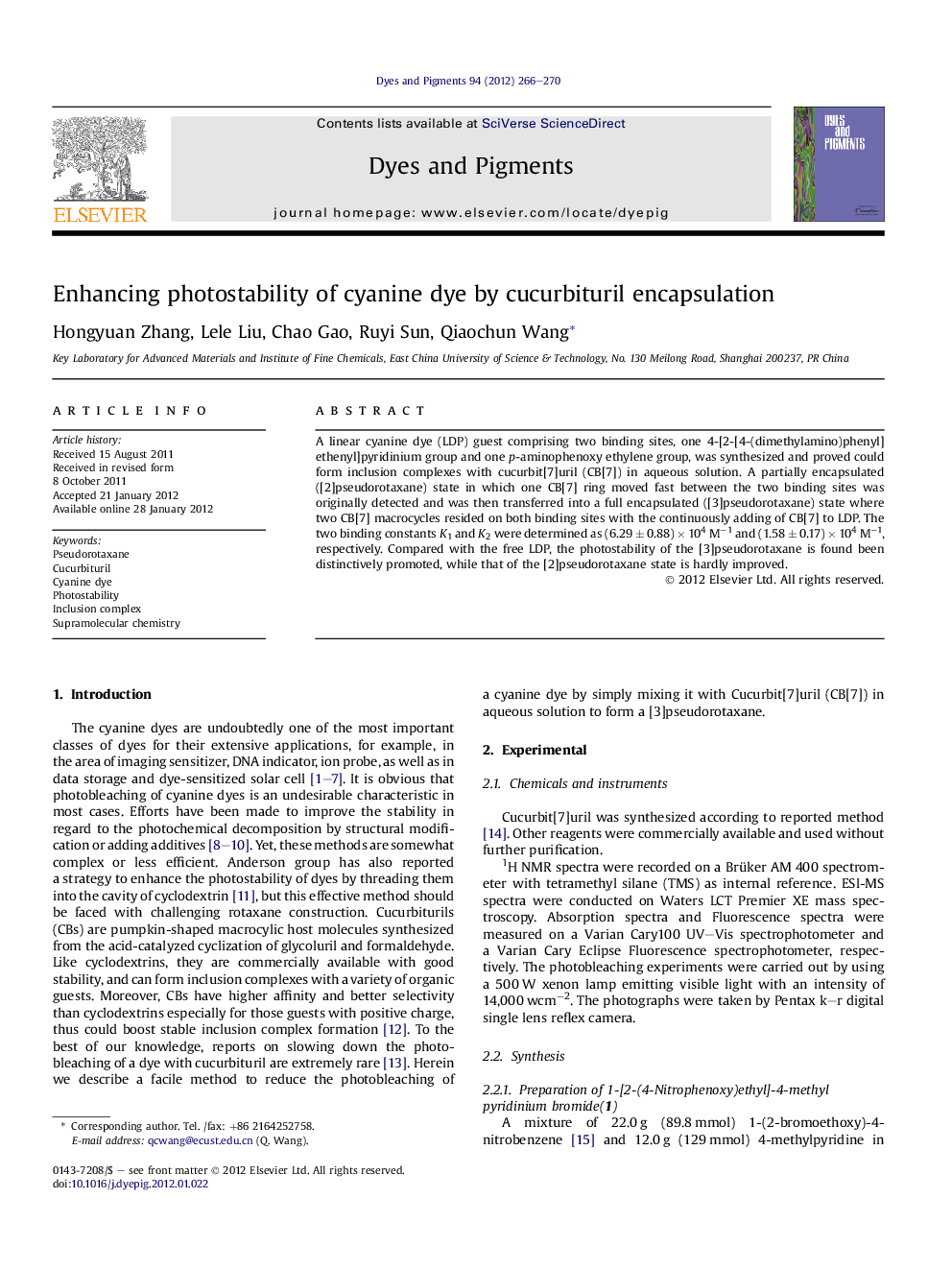| Article ID | Journal | Published Year | Pages | File Type |
|---|---|---|---|---|
| 176942 | Dyes and Pigments | 2012 | 5 Pages |
A linear cyanine dye (LDP) guest comprising two binding sites, one 4-[2-[4-(dimethylamino)phenyl]ethenyl]pyridinium group and one p-aminophenoxy ethylene group, was synthesized and proved could form inclusion complexes with cucurbit[7]uril (CB[7]) in aqueous solution. A partially encapsulated ([2]pseudorotaxane) state in which one CB[7] ring moved fast between the two binding sites was originally detected and was then transferred into a full encapsulated ([3]pseudorotaxane) state where two CB[7] macrocycles resided on both binding sites with the continuously adding of CB[7] to LDP. The two binding constants K1 and K2 were determined as (6.29 ± 0.88) × 104 M−1 and (1.58 ± 0.17) × 104 M−1, respectively. Compared with the free LDP, the photostability of the [3]pseudorotaxane is found been distinctively promoted, while that of the [2]pseudorotaxane state is hardly improved.
► A linear cyanine dye LDP containing two Cucurbituril recognition sites was synthesized. ► One [2]pseudorotaxane and one [3]pseudorotaxane states were found when mixing LDP and CB[7] in aqueous solution. ► The photostability of LDP was distinctly improved in the [3]pseudorotaxane state.
